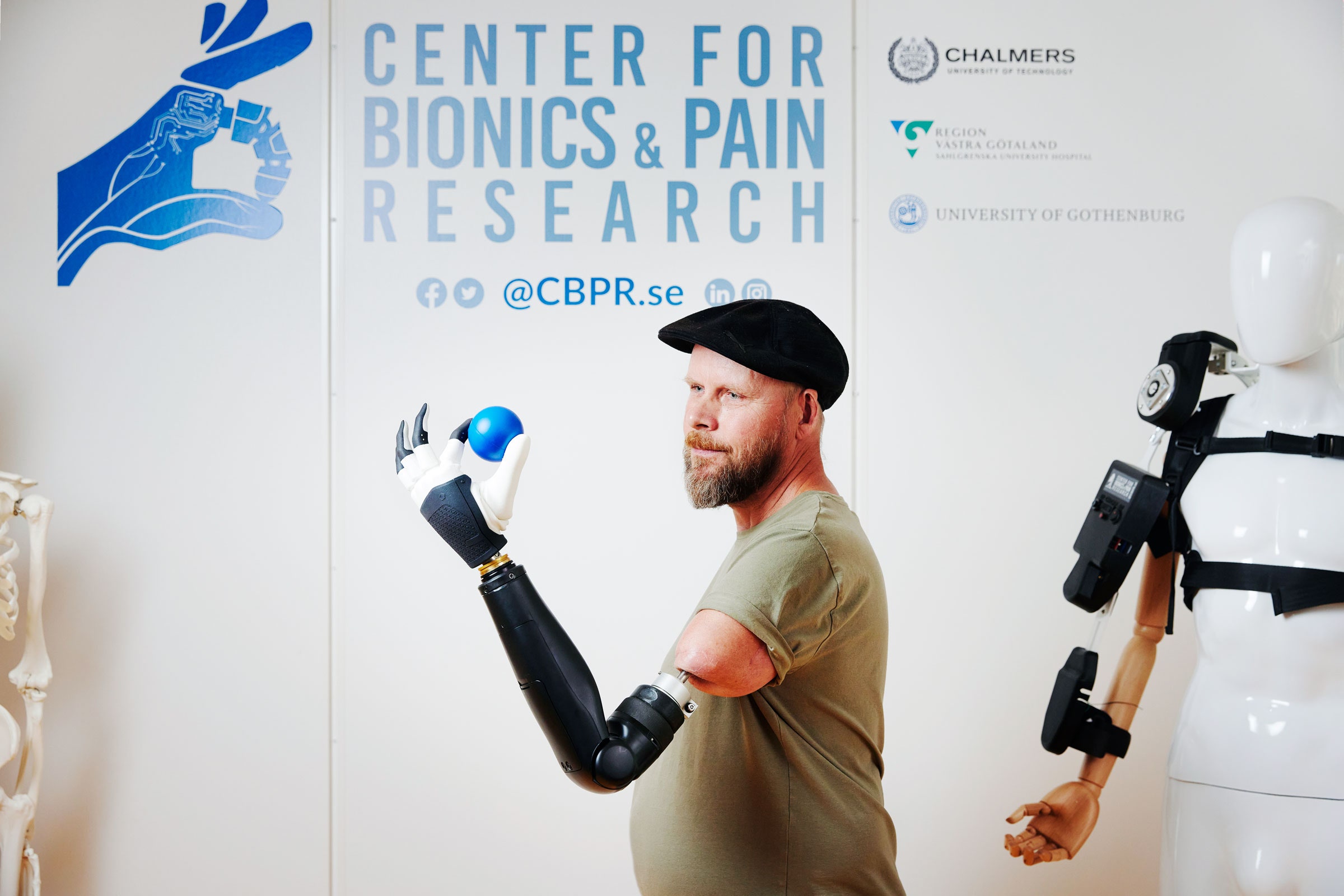
This Prosthetic Limb Actually Attaches to the Wearer’s Nerves
In addition to the Olympics and Paralympics, there’s another epic celebration of human fortitude: The Cybathlon, otherwise known as the Cyborg Olympics. According to Max Ortiz-Catalan, a bionics engineer at the Chalmers University of Technology in Sweden, it’s “the Olympics for cyborgs, where technologies are used to overcome disabilities.” Unlike the other events, the Cybathlon commemorates new prosthetic technologies and runs timed competitions ranging from biking to hanging laundry.
Hanging up T-shirts while wearing an arm prosthesis is notably difficult. These prostheses can be bulky and hard to maneuver, with a limited range of motion. It’s a challenge Ortiz-Catalan’s research group has been working on for over a decade. But in a study published recently in Science Translational Medicine, the team took a major step toward making prosthetic movement more precise and controllable—one that they hope will help a person wearing their prosthetic design win what the Cybathlon calls its “arms race” in 2024. Most prosthetic arms use the person’s other body parts, like the shoulders or elbows, to power them, which limits dexterity. But the one the team demonstrated in the study was attached directly to a user’s own nervous system, allowing him to individually move each prosthetic finger at will. These movements would prove useful for something like clipping a T-shirt to a clothesline—one of the tasks in the competition.
For patients, “what they value and prioritize the most on the prosthesis was the control,” Ortiz-Catalan says. “So then we started working on surgical procedures to improve the way we can access information for control.”
Prostheses have been around for almost 3,000 years—the earliest one discovered was a wooden toe found in an Egyptian noblewoman’s casket. Over the years, prostheses have been refined to become lighter and more humanlike, and to offer a greater range of motion. Even so, major challenges remain. Paul Cederna, a plastic surgeon at the University of Michigan, says that moving “body-powered” prosthetics, which control the prosthetic through cables and harnesses attached to the residual limb, takes a lot of effort and often leads to pain or fatigue.
A newer kind of device, known as a “myoelectric prosthesis,” is powered by electric nerve signals from the residual limb. These “have incredible robotic capabilities but no good strategy to be able to control them,” says Cederna—like having “a Ferrari in your garage but no car keys.” They face a host of issues: For example, in many patients with upper limb amputations, the muscles that control individual fingers or small movements no longer exist, limiting the motions they can make with a prosthesis. Nerve signals from the brain can be tiny, making them hard to pick up among the body’s other electrical noise. And while most myoelectric prostheses run based on a series of surface electrodes placed on the skin of the user’s residual limb, these electrodes can slide around, causing the prosthesis to become unreliable.
In 2020, Cederna’s research group developed a different surgical strategy: Connecting nerves in the residual limb to little pieces of muscle. Working with patients who had amputated arms, they dissected the end portions of whole nerves from the residual limb into fascicles, or small bundles of nerve fibers. Then they wrapped each fascicle with a small piece of muscle taken from somewhere else in the body and stripped of its nerves. (Imagine a pig in a blanket—where the sausage is the nerve and the crescent roll around it is the muscle graft.)

